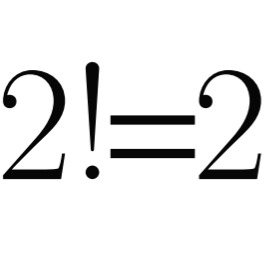논리학, 그 세 번째 이야기 | 추이법칙의 증명 ( The Proof of Law of Transitivity )
수학/논리학 | Mathematical Logic2021. 8. 4. 23:09
이번 글에서는 추이법칙을 증명할 것이다. 추이법칙이란, 다음과 같은 추론 규칙을 말한다.
이를 증명하는 방식은 여러 가지 방식이 있지만, 이번 글에서는 증명을 간편하게 하기 위해 이전 글에서 소개했던 연역 정리를 사용하여 증명할 것이다. 그 증명은 다음과 같다.
Theorem 1. 추이법칙 ( Law of Transitivity )
Proof.
먼저,
따라서
앞으로 위의 추이법칙은 HS (Hypothetical Syllogism; 가언적 삼단논법)로 줄여서 사용할 것이다.
추이법칙과 더불어서 자주 사용되는 추론 규칙으로는 아래와 같은 규칙이 있다.
Theorem 2.
Proof.
이번에도 바로 증명하기보단 연역 정리를 이용하여 증명하는 편이 더 간단하다. 그러니 먼저
따라서
'수학 > 논리학 | Mathematical Logic' 카테고리의 다른 글
| 논리학, 그 여섯 번째 이야기 | 여러 가지 추론 규칙 ( Various Inference Rules ) (0) | 2021.08.10 |
|---|---|
| 논리학, 그 다섯 번째 이야기 | 이중부정 ( Double Negation ) (0) | 2021.08.05 |
| 논리학, 그 네 번째 이야기 | 대우법칙의 증명 ( The Proof of the Equivalence of Contrapositives ) (0) | 2021.08.05 |
| 논리학, 그 두 번째 이야기 | 연역 정리 ( Deduction Theorem ) (0) | 2021.08.03 |
| 논리학, 그 첫 번째 이야기 | 명제논리 ( Propositional Calculus ) (2) | 2021.08.03 |
댓글()








